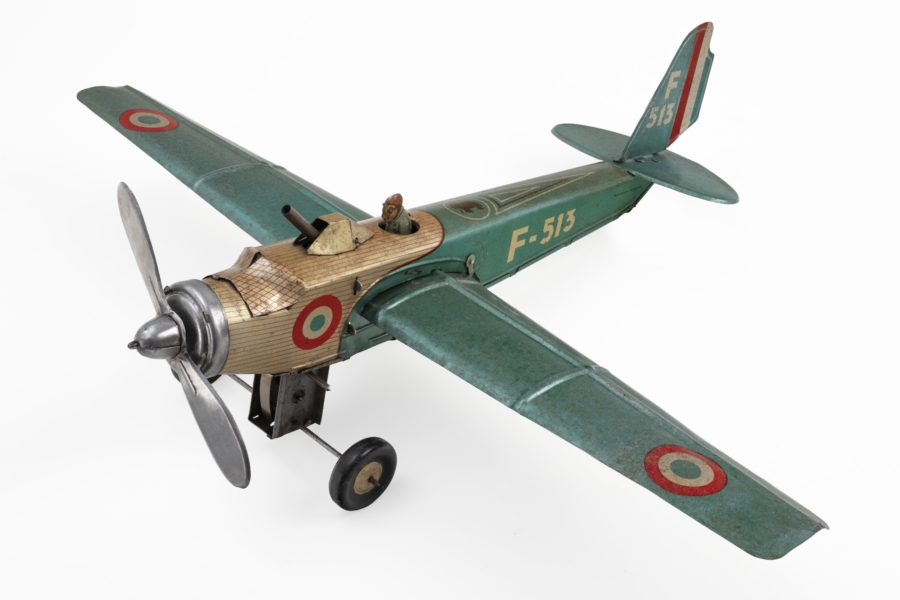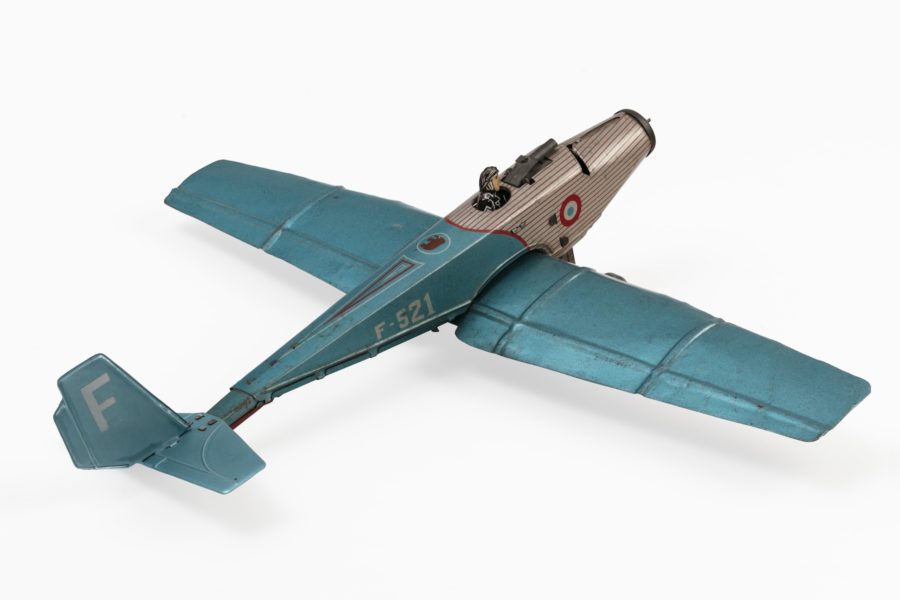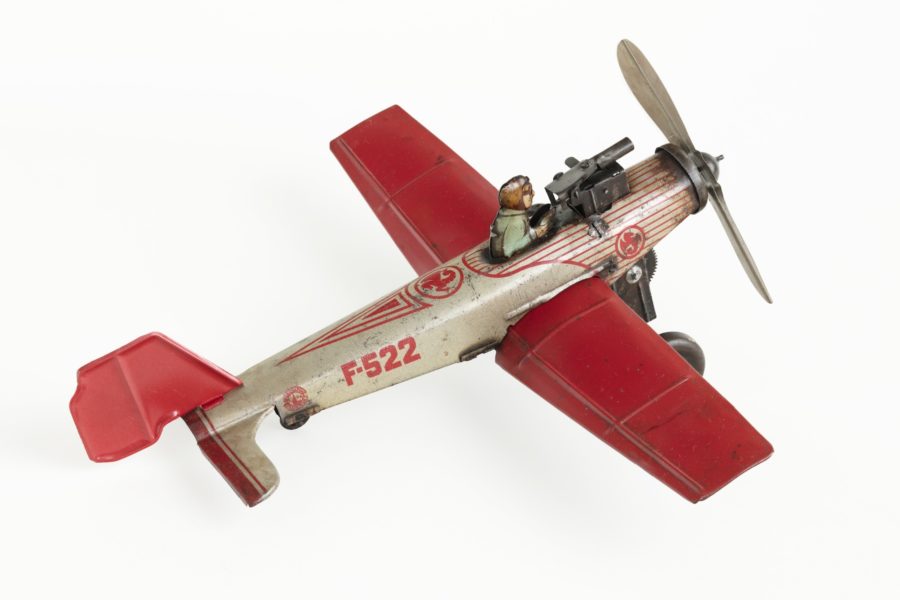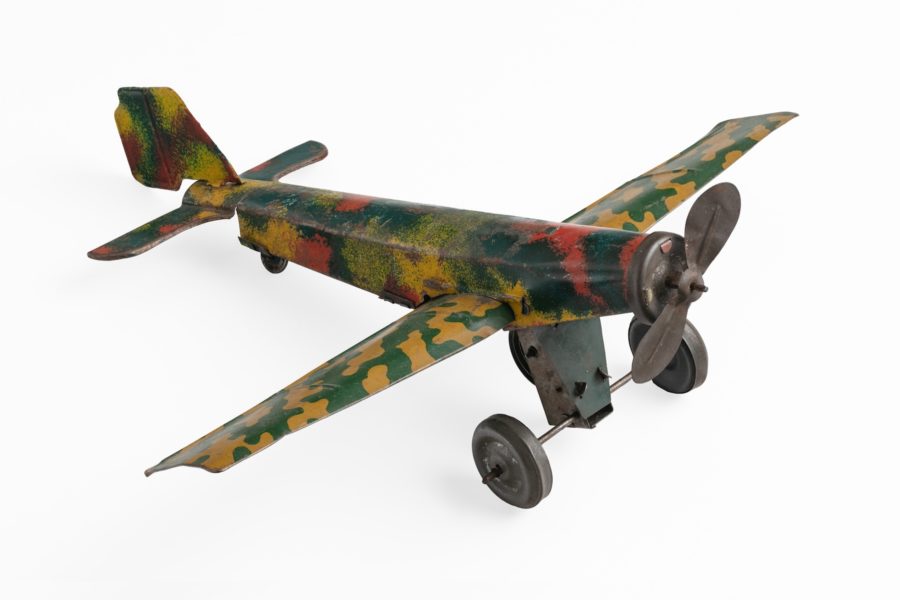From Christmas 1937 to 1939, the Strasbourg firm offered four different fighters aircrafts.
F-513 fighter
Based on the F-INI, the 513 fighter appeared in La Samaritaine’s “Etrennes 1938” catalogue (printed in October 1937).
A rustic sheet metal cover conceals the cockpit, and the gun in its turret is fitted with a flintlock system that produces sparks.

Lithographed sheet – Clockwork, rolls on the ground, the propeller turns – 60 x 50 cm
F-521 fighter
The F-513 was replaced by a new fighter in La Samaritaine’s “Etrennes 1939” catalogue (printed in October 1938).
It has the same spark-generating system, but the machine gun is realistic and the cockpit is no longer concealed. The aircraft is shorter than its predecessor.

Lithographed sheet – Clockwork, rolls on the ground, the propeller turns – 57 x 45 cm
F-522 fighter
Released in 1938 on the basis of the pre-war F.POU, with the same spark-ignition system, the F-522 replaced the two previous toys.

Lithographed sheet – Clockwork, rolls on the ground, the propeller turns – 31.5 x 26 cm
Camouflaged Fighter
The wings are in lithographed sheet metal, the rest of the aircraft is painted, no more machine gun spitting sparks, savings, savings!
This is an unmodified F-POU with a different livery.
This toy came out in 1939, and of course its destiny suffered.

Lithographed sheet – Clockwork, rolls on the ground – 32 x 25 cm
What is anecdotal in the field of toys illustrates like a fable the weakness of French aviation in 1939-1940; whereas in Great Britain, where a few visionaries including Reginald. J. Mitchell were responsible for the mass production of two remarkable fighters, the Hurricane and the Spitfire, which helped win the Battle of Britain. In France, however, the incoherence of the industrial strategy hampered the development of a coherent air war doctrine.
